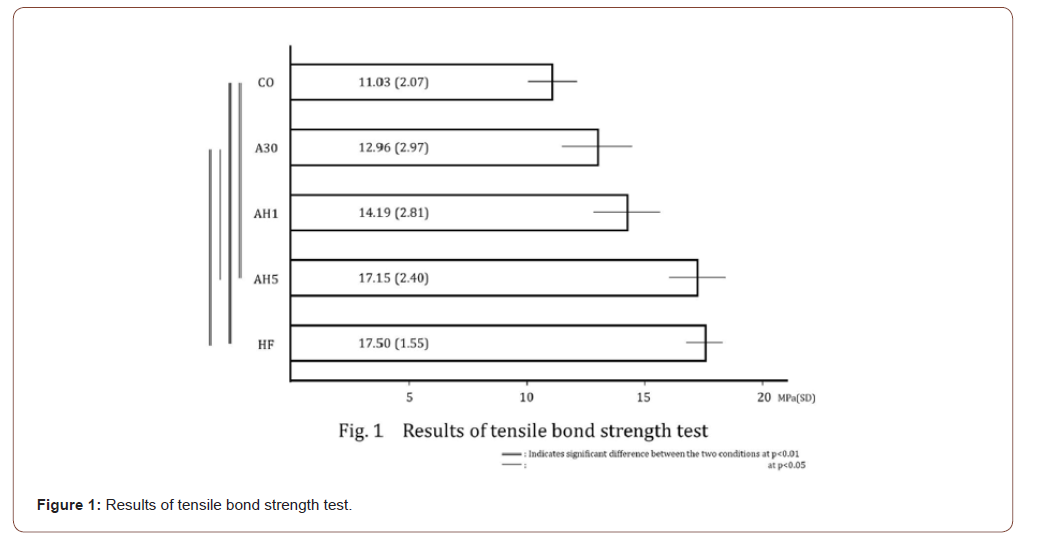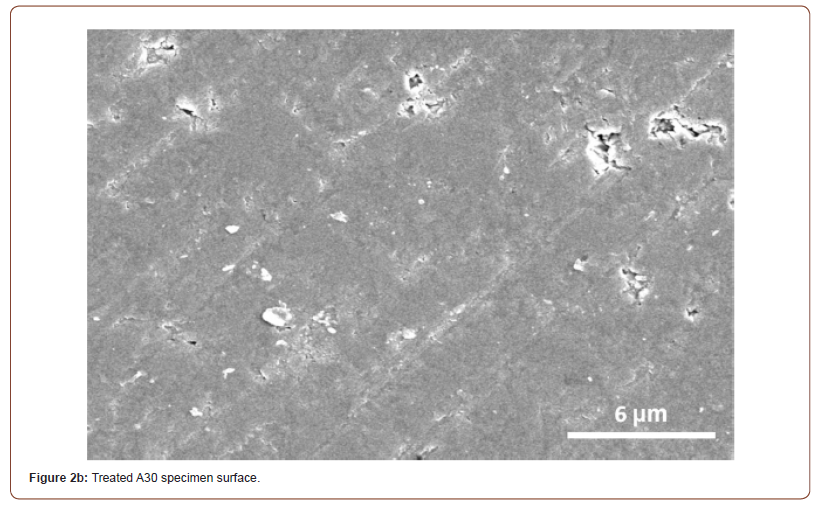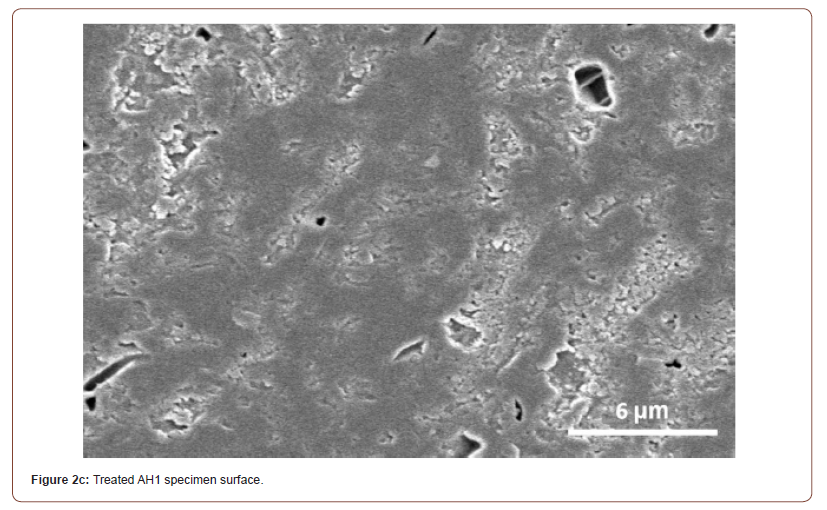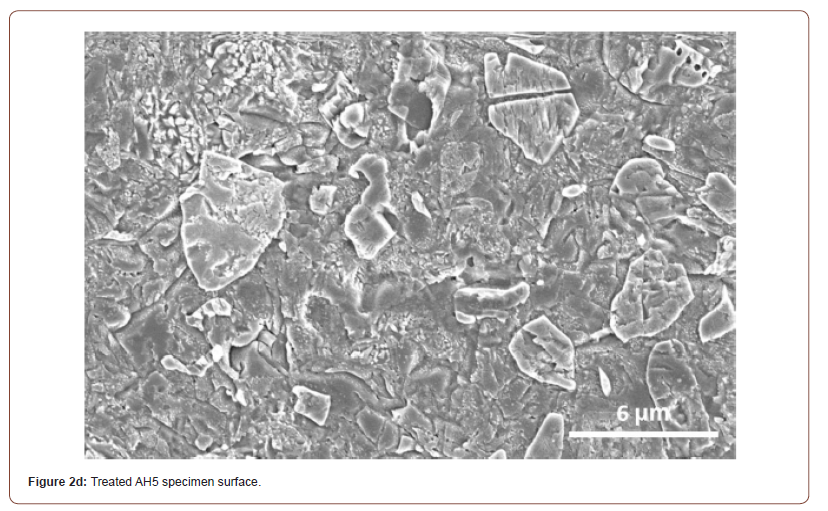 Research Article
Research Article
Effect of APF Treatment Of CAD/CAM Ceramics on Bond Strength
Toshio Maseki1*, Mei Komoto1, Seisuke Koshida1, Masahiko Maeno1, Takatoshi Kawai2, Toshihiko Nitta2 and Masaru Yamase2
1Department of Adhesive Dentistry, The Nippon Dental University, School of Life Dentistry at Tokyo, Tokyo, Japan
2General Dentistry, The Nippon Dental University Hospital, Tokyo, Japan
Toshio Maseki, Department of Adhesive Dentistry, The Nippon Dental University, School of Life Dentistry at Tokyo, 2-3-16 Fujimi, Chiyoda-ku, Tokyo 102-8158, Japan.
Received Date: March 05, 2021; Published Date: March 18, 2021
Abstract
Hydrofluoric acid treatment is frequently used for the surface treatment of ceramic restoratives containing silica. However, hydrofluoric acid is extremely toxic and requires great care when used in chair-side situations. Acidulated phosphate fluoride (APF) solution is highly safe and widely used for caries prevention in both children and adults by application to the teeth. Use of a safer alternative to hydrofluoric acid is desirable, so this study aimed to investigate the effects of surface treatment with APF solution combined with heat treatment on bonding to CAD/CAM ceramics. Specimens of ceramics were distributed into five groups: Group A30, treated by 2% APF for 30 min; Group AH1, treated by APF with heat treatment (at 100⁰C for 1 min); Group AH5, treated by APF with heat treatment (at 100⁰C for 5min); Group HF, treated with 8% hydrofluoric acid, and Group CO, without etching treatment as a control. After treatment, specimens were bonded with dual-cured resin cement system. Tensile bond strength was measured after 24h. Mean bond strengths were as follows: Group CO, 11.03 MPa; Group A30, 12.96 MPa; Group AH1, 14.19 MPa; Group AH5, 17.15 MPa; and Group HF, 17.50 MPa. APF treatment combined with additional heat treatment offered effective bonding to CAD/CAM ceramics
Keywords: APF; Tensile bond strength; CAD/CAM ceramics
Introduction
Huge numbers of ceramic restorations are widely applied in dental clinics owing to their good biocompatibility, beneficial mechanical properties, and good esthetics. Dental CAD/CAM. systems are in wide use and numerous ceramic restorations have been created, providing substantial value to patients seeking esthetic restoration. Among these, machinable milling-type dental CAD/CAM systems use a feldspar base, lithium disilicate base, or other milling blocks. Good clinical prognosis is desired for these restorations by firmly bonding to the tooth substance [1]. Silicacontaining ceramic restorations are usually surface-treated with a silane coupling agent, but this is preceded by hydrofluoric acid treatment [2]. However, hydrofluoric acid is a deadly poison [3] and great care is required when using this agent in chair-side situations. Establishment of a safe alternative to hydrofluoric acid treatment is thus desirable for silica-containing ceramic restorations.
Acidulated phosphate fluoride (APF) solution is highly safe, and widely used for caries prevention in both children and adults by application to the teeth. Some researchers have reported using APF as a substitute for hydrofluoric acid in ceramic restorations [4-6]. For example, Della Bona [4] used 4% APF solution for 2min, However, the effects of low-concentration APF solution (for caries prevention) and heat treatment on bonding have not yet been evaluated. The purpose of this study was to investigate the effects of surface treatment by APF with heat treatment on bonding to dental CAD/CAM ceramics.
Materials and Methods
Specimens comprised CEREC VITA Blocs Mark 2 (A3.5C, I8; VITA Zahnfabrik, Bad Säckingen, Germany), sectioned into 2.0-mm thicknesses and polished with a series of SiC-paper to 800 grit. Polished ceramics were distributed into following four groups: Group A30, treated by 2% APF (Froden A; Sunstar, Osaka, Japan) for 30min; Group AH1, treated by APF with heat treatment at 100⁰C for 1 min; Group AH5, treated by APF with heat treatment at 100⁰C for 5 min; Group HF, treated with 8% hydrofluoric acid (All Bond Porcelain Etchant Gel; Bisco, Chicago, IL, USA); and Group CO, a control group without etching treatment. After treatment, a silane-coupling agent (Rely X Ceramic Primer; 3M, Saint Paul, MN, USA) was applied, followed by the dual cured resin cement system (Rely X ARC A3; 3M). The adhesive system was combined with a composite resin cylinder (Filtek Z250 A3; 3M) and tensile bond strength testing was performed after storage in 37⁰C water for 24h (n=8). Data were statistically analyzed using one-way ANOVA and q-test using Excel 2016 (Microsoft, Redmond, WA, USA ). Typical treated surfaces of ceramics were coated with osmium and observed by field emission scanning electron microscopy (S-4000; Hitachi, Tokyo, Japan) under ×3,000 magnification with an accelerating voltage of 5.0 keV.
Results

(Figure 1) shows tensile bond strengths and results of statistical analysis. Mean (standard deviation) tensile bond strengths were: Group CO, 11.03 (2.07) MPa; Group A30, 12.96 (2.97) MPa; Group AH1, 14.19 (2.81) MPa; Group AH5, 17.15 (2.40) MPa; Group HF, 17.50 (1.55) MPa. Significant differences were apparent between CO and both AH5 and HF (p<0.01 each), and also between A30 and both AH5 (p<0.05) and HF (p<0.01). (Figure 2) shows typical specimen surfaces of the treated ceramics. The CO specimen surface showed an overall smooth surface with some dimples (Figure 2a). The A30 specimen surface showed a slightly rough surface compared to CO, along with cutting scratches and small defects due to polishing (Figure 2b). The AH1 specimen surface showed many irregular defects of various sizes; although most defects were shallow, some were filled with granular particles (Figure 2c). Most of the A30 specimen surface was rough and interspersed with irregular, 1- to 6-μm angular filler-like particles (Figure 2d). Half of the HF specimen surface was rough with many small grooves, while the other half comprised a depression with a smooth inner surface that seemed to have melted (Figure 2e).





Discussion
The clinical success of a ceramic restoration will depend on the quality and durability of the adhesion between the restorative ceramic and the resin cement. With silica-containing ceramics, roughening of the ceramic surface and silane treatment are considered particularly important. For silane treatment, decreases in bond strength after storage in water were reportedly suppressed using a hair dryer direct warm air onto the silanized ceramic surface [7, 8]. On the other hand, roughening of the ceramic surface can achieve an increased surface area. For this roughening, hydrofluoric acid has long been used as a chemical treatment. Hydrofluoric acid was originally used in the semiconductor industry as a major component in etching silicon wafers for integrated-circuits. However, hydrofluoric acid is a deadly poison, because of its ability to penetrate tissues if swallowed [3]. Alternative methods have thus been sought from many clinicians, and some researchers have focused on APF 4-6.
In this study, bond strengths varied according to the methods used to treat the surface of ceramics. No significant difference was seen between Groups AH5 and HF, showing that treatment using the low-concentration APF solution used in caries prevention along with heat treatment was sufficient to provide high bond strength to CEREC ceramics. The surface treatment of the ceramics might be considered to influence the clinical prognosis of the esthetic ceramic restoration. Similar reactions of both hydrogen and fluoride might occur with APF and hydrofluoric acid on the surface of the ceramics specimen. However, ionic concentrations of H and F differed between APF and hydrofluoric acid, resulting in different etched patterns on the ceramics surface [9]. Likewise in the present study, AH5 and HF showed similar bond strength, but the surfaces of the ceramics to be treated differed under scanning electron microscopy. Nevertheless, surface areas appeared to be increased in both conditions as compared to the control condition in Group CO.
According to this study, AH5 offered significantly higher bond strength than A30 (p<0.05). In the other study, APF was usually applied under room temperature conditions and stored in a laboratory [6,10]. Etching involves a chemical reaction and additional heat treatment seemed to increase the reaction of the APF in this study. Consequently, AH5 appeared to offer equivalent high bond strength to HF. An in vitro study by Shirota, et al. [11] found that APF surface treatment with additional heat treatment was effective in decreasing marginal fracture of the CEREC inlay restoration [11]. Bohrs, et al. [12] reported that a chair-time of about 40min was necessary from cavity preparation to ceramics inlay cementation in CEREC restoration [12]. Further, Wurbs described posterior single-tooth restorations using chair-side CAD/ CAM system needing 54-115min [13]. Then, 5min of additional heat treatment could be considered acceptable from the perspective of chair-time in clinical situations. Our results suggest that APF with additional heat treatment may be effective for bonding to ceramic restorations.
Conclusion
APF treatment combined with additional heat treatment offered effective bonding to CAD/CAM ceramics.
Acknowledgement
None
Conflict of Interest
No Conflict of Interest.
References
- Murillo Gómez F, Rueggeberg FA, De Goes MF (2017) Short and long-term bond strength between resin cement and glass-ceramic using a silane-containing universal adhesive. Oper Dent 42(5): 514-525.
- Nogueira IO, Oliveira PFG, Magno MB, Ferreira DMTP, Maia LC, et al. (2021) Does the application of an adhesive layer improve the bond strength of etched and silanized glass ceramics to resin-based materials? A systematic review and meta-analysis. The Journal of Prosthetic Dentistry 125(1): 56-64.
- Gossel TA, Bricker JD (1984) Principles of Clinical Toxicology (1st), Raven press, New York, USA, Pp: 119-120.
- Della Bona A, Anusavice KJ, Mecholsky JJ (2003) Failure analysis of resin composite bonded to ceramic. Dent Mater 19(8): 693-699.
- Kukiattrakoon B, Thammasitboon K (2007) The effect of different etching times of acidulated phosphate fluoride gel on the shear bond strength of high-leucite ceramics bonded to composite resin. J Prosthet Dent 98(1): 17-23.
- Mallikarjuna DM, Kumar SGB, Shetty S, Shetty M, Raj B (2018) Comparative evaluation of lithium disilicate ceramic surface and bond strength to dentin surface after treatment with hydrofluoric acid and acidulated phosphate fluoride gel: An In Vitro study. Indian J Dent Res 29(6): 794-798.
- Roulet JF, Söderholm KJM, Longmate J (1995) Effects of treatment and storage conditions on ceramic/composite bond strength. J Dent Res 74(1): 381-387.
- Shen C, Oh WS, Williams JR (2004) Effect of post-silanization drying on the bond strength of composite to ceramic. J Prosthet Dent 91(5): 453-458.
- Al Edris A, Al Jabr A, Cooley RL (1990) SEM evaluation of etch patterns by three etchants on three porcelains. J Prosthet Dent 64(6): 734-739.
- Thomas A, Sridhar S, Aghyarian S, Watkins-Curry P, Chan JY, et al. (2016) Corrosion behavior of zirconia in acidulated phosphate fluoride. J Appl Oral Sci 24(1): 52-60.
- Shirota A, Maseki T, Kimishima T, Nara Y, Tanaka H (2003) Effect of APF surface treatment for CEREC inlays on bond strength and marginal fracture. J Dent Res 82(Special-Issue A): 1656.
- Bohrs R, Wiedhahn K (1999) Teameinsatz in der CAD/CAM-Behandlung. Quint Team-Journal 29: 15-25.
- Wurbs M, Simon JF, Troeltzsch M, Denekas T, Wichmann M, et al. (2006) Dentist-time expenditure for two different adhesive all-ceramic systems. J Dent 34(7): 450-453.
-
Toshio Maseki, Mei Komoto, Seisuke Koshida, Masahiko Maeno. Effect of APF Treatment Of CAD/CAM Ceramics on Bond Strength. On J Dent & Oral Health. 4(2): 2021. OJDOH.MS.ID.000585.
-
Acidulated phosphate fluoride, Dental CAD/CAM, Tooth substance, Etching treatment, Dental clinics, Hydrofluoric acid, Silane treatment, Smooth surface, Teeth.
-

This work is licensed under a Creative Commons Attribution-NonCommercial 4.0 International License.






